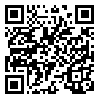Volume 7, Issue 26 (2014)
LCQ 2014, 7(26): 91-121 |
Back to browse issues page
Abstract: (9612 Views)
Abstract National anthems known as texts constructed based on symbolic approaches and focus of national attention are always significant and demand investigation. This research is intended to study the national anthem from the perspective of linguistics in the context of critical discourse analysis and discourse theory (the combination of tools of Van Dijk approaches and theory of Laclau & mouffe). This research is trying to answer the following questions: What are the nodal points of each country´s national anthem? What are the discourse linguistic similarities and differences between the findings in the national anthems? To this end, the national anthems of the 48 Asian countries as well as countries of the UN Security Council's five permanent members will not be reviewed. Among the national anthems, 62 indicating that the main concern of all people were obtained. The most The findings of this study indicate that the use of linguistic discourse of the present time (%97) significantly more than double future (%65) and the past (%59) is. 12 Asian countries (25%) in their national anthems and emphasized on the polarity opposition of "us" versus "them" and all of them are among the developing countries. And the remaining 36 (75%) only praise themselves and believe in theirs, not against it. The frequency of positive words in (93%) is greater than negative words. The use of negative words in the developed countries is much lower than in other countries - that's 63% of it is used only positive words. Among the permanent members of the Security Council of the Russian national anthem of maximum similarity, the languages with other Asian countries have anthems and greatest divergence from other members of the Security Council. Keywords: national anthem, analyzing (critical) discourse, nodal point, us versus them, developmental procedure
Keywords: «national anthem», «analyzing (critical) discourse», « nodal point», «us versus them», «developmental procedure»
Received: 2013/05/9 | Accepted: 2014/06/19 | Published: 2014/08/23
| Rights and permissions | |
 |
This work is licensed under a Creative Commons Attribution-NonCommercial 4.0 International License. |


